实例介绍
【实例简介】Distributed and Cloud Computing
Distributed and Cloud Computing
【实例截图】
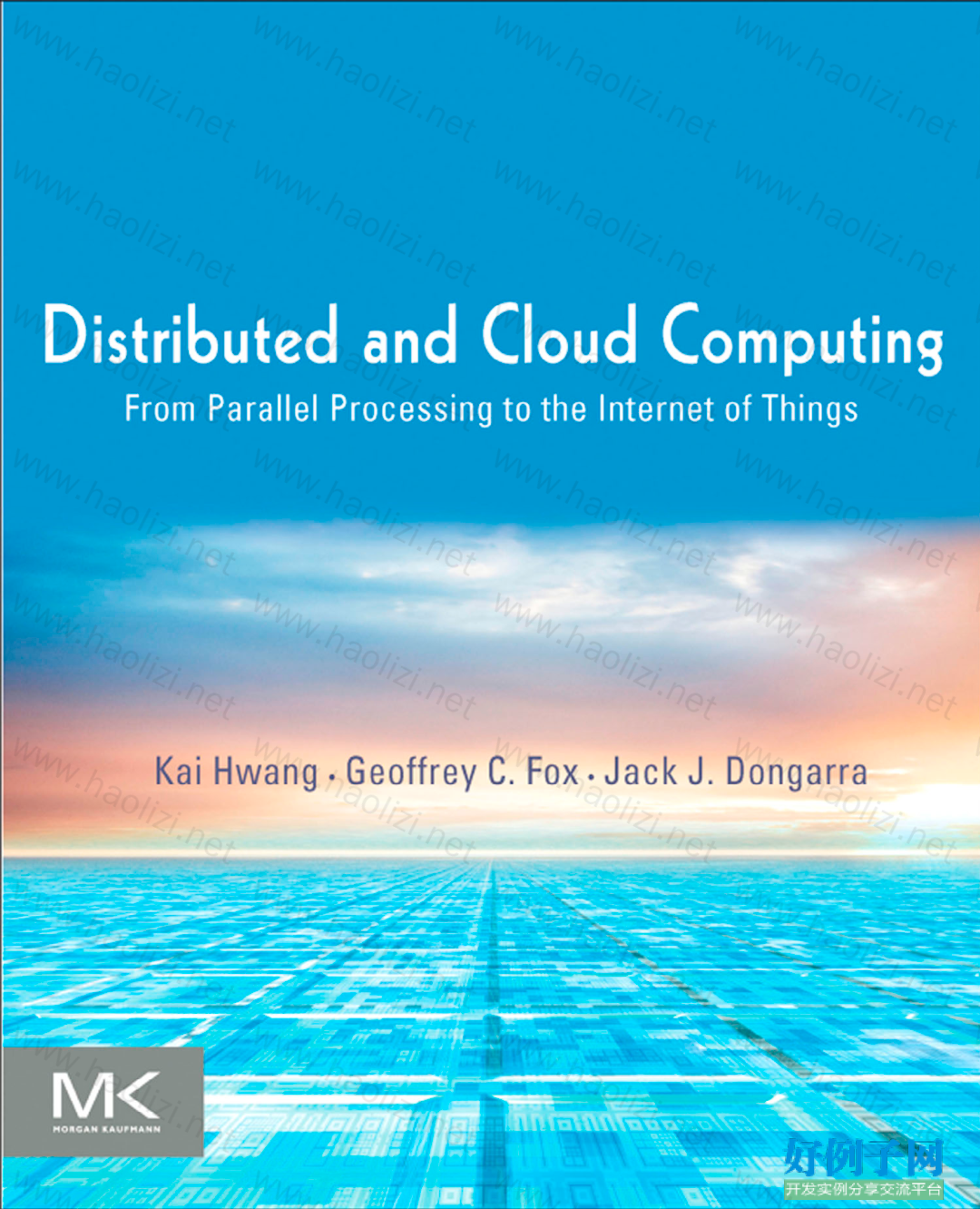
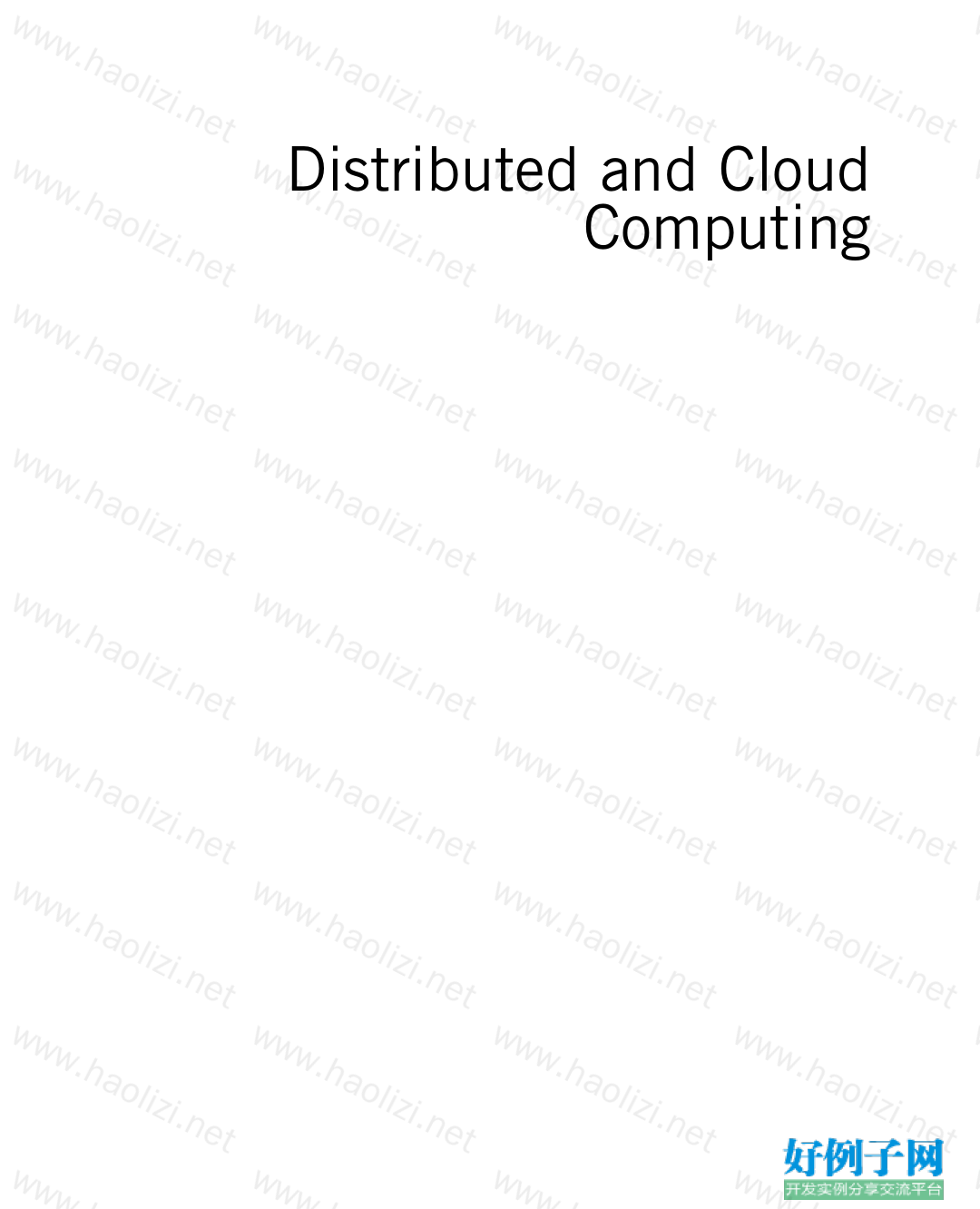

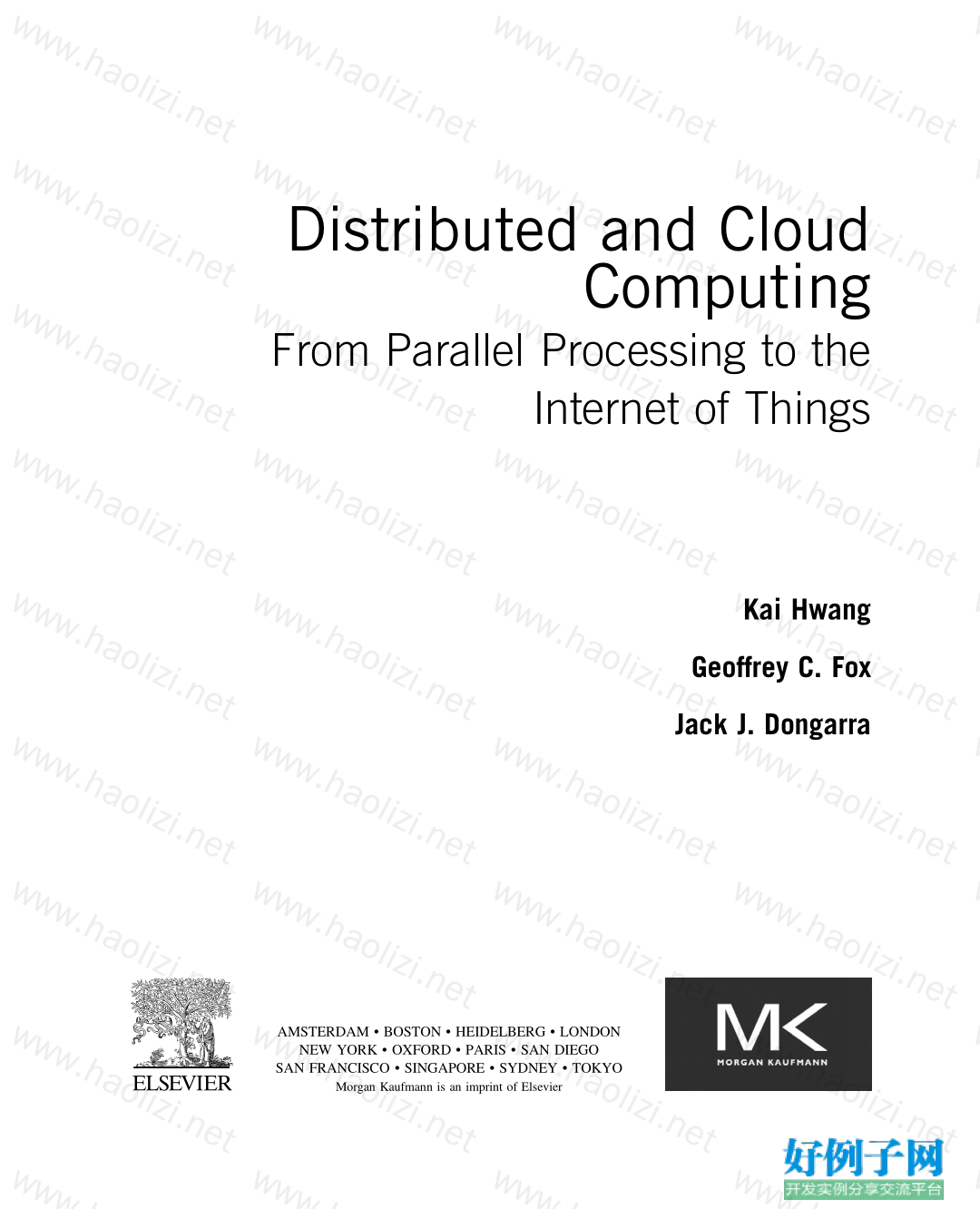




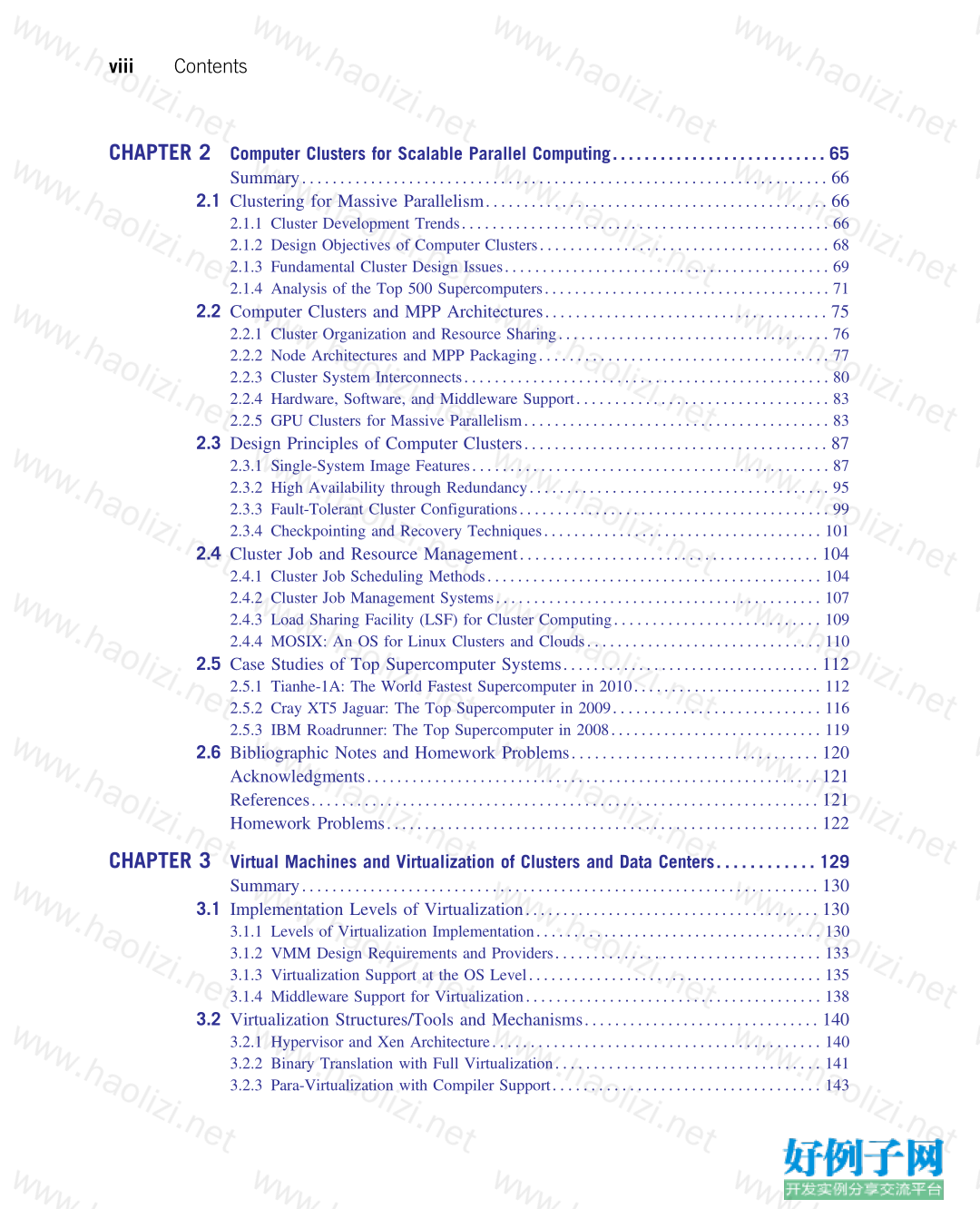


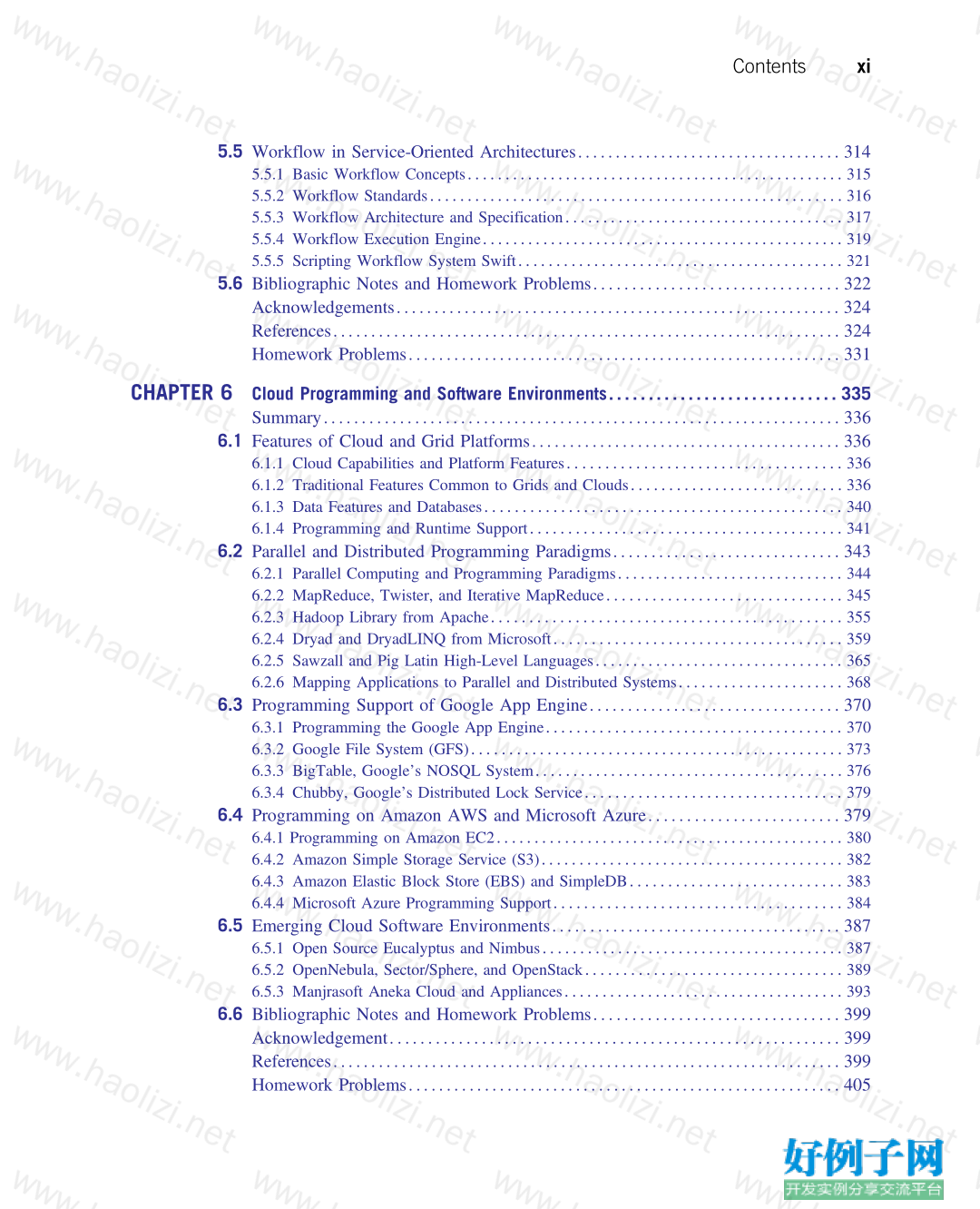
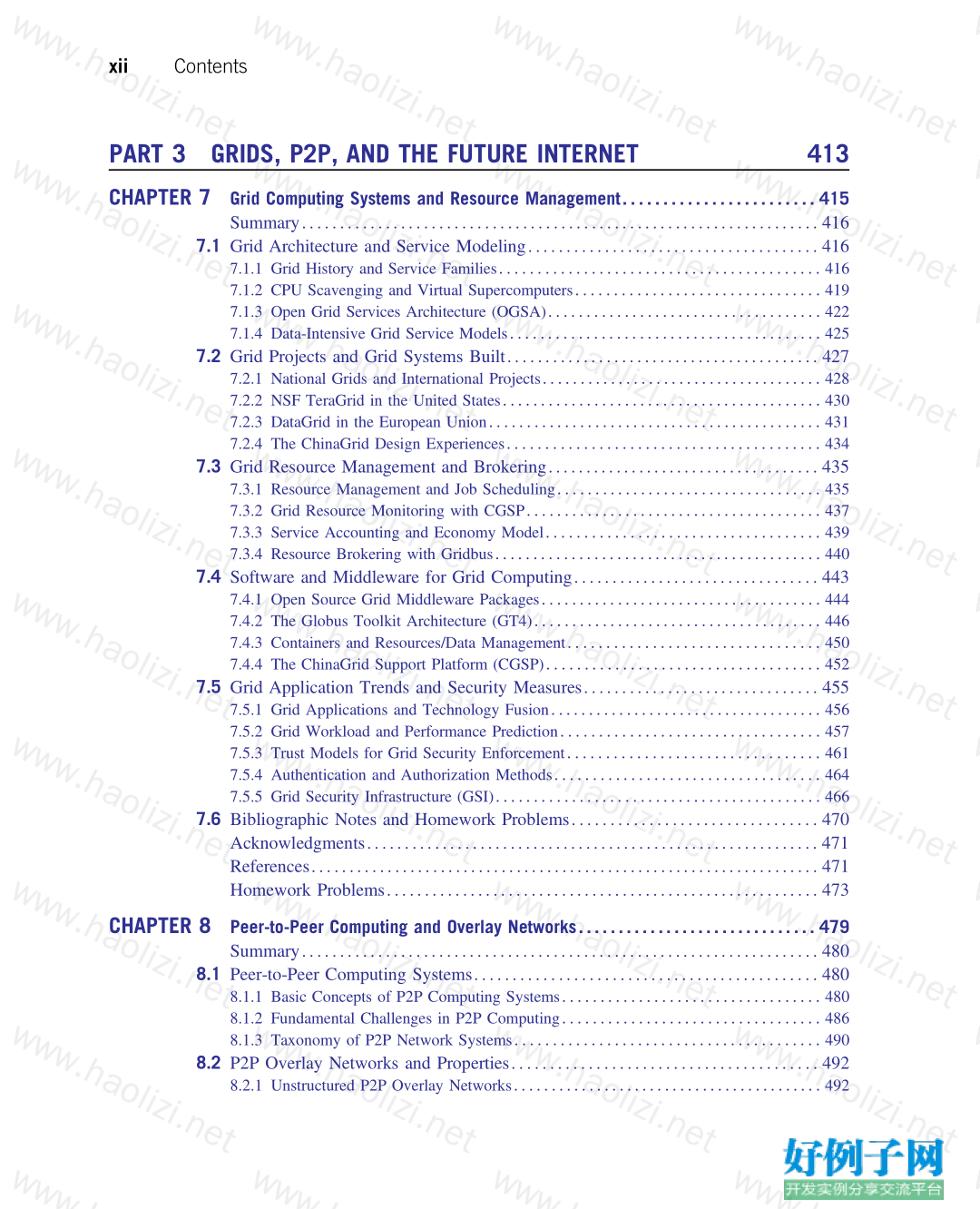


【核心代码】
Contents
Preface........................................................................................ xv
About the Authors............................................................................ xix
Foreword..................................................................................... xxi
PART 1 SYSTEMS MODELING, CLUSTERING,
AND VIRTUALIZATION 1
CHAPTER 1 Distributed System Models and Enabling Technologies......................... 3
Summary....................................................................... 4
1.1 Scalable Computing over the Internet........................................... 4
1.1.1 The Age of Internet Computing ............................................... 4
1.1.2 Scalable Computing Trends and New Paradigms ................................ 8
1.1.3 The Internet of Things and Cyber-Physical Systems ............................ 11
1.2 Technologies for Network-Based Systems...................................... 13
1.2.1 Multicore CPUs and Multithreading Technologies .............................. 14
1.2.2 GPU Computing to Exascale and Beyond ..................................... 17
1.2.3 Memory, Storage, and Wide-Area Networking ................................. 20
1.2.4 Virtual Machines and Virtualization Middleware ............................... 22
1.2.5 Data Center Virtualization for Cloud Computing ............................... 25
1.3 System Models for Distributed and Cloud Computing.......................... 27
1.3.1 Clusters of Cooperative Computers ........................................... 28
1.3.2 Grid Computing Infrastructures .............................................. 29
1.3.3 Peer-to-Peer Network Families ............................................... 32
1.3.4 Cloud Computing over the Internet ........................................... 34
1.4 Software Environments for Distributed Systems and Clouds.................... 36
1.4.1 Service-Oriented Architecture (SOA) ......................................... 37
1.4.2 Trends toward Distributed Operating Systems .................................. 40
1.4.3 Parallel and Distributed Programming Models ................................. 42
1.5 Performance, Security, and Energy Efficiency.................................. 44
1.5.1 Performance Metrics and Scalability Analysis .................................. 45
1.5.2 Fault Tolerance and System Availability ...................................... 48
1.5.3 Network Threats and Data Integrity .......................................... 49
1.5.4 Energy Efficiency in Distributed Computing ................................... 51
1.6 Bibliographic Notes and Homework Problems.................................. 55
Acknowledgments............................................................. 56
References.................................................................... 56
Homework Problems.......................................................... 58
vii
CHAPTER 2 Computer Clusters for Scalable Parallel Computing........................... 65
Summary..................................................................... 66
2.1 Clustering for Massive Parallelism............................................. 66
2.1.1 Cluster Development Trends ................................................ 66
2.1.2 Design Objectives of Computer Clusters ...................................... 68
2.1.3 Fundamental Cluster Design Issues ........................................... 69
2.1.4 Analysis of the Top 500 Supercomputers ...................................... 71
2.2 Computer Clusters and MPP Architectures..................................... 75
2.2.1 Cluster Organization and Resource Sharing .................................... 76
2.2.2 Node Architectures and MPP Packaging ...................................... 77
2.2.3 Cluster System Interconnects ................................................ 80
2.2.4 Hardware, Software, and Middleware Support ................................. 83
2.2.5 GPU Clusters for Massive Parallelism ........................................ 83
2.3 Design Principles of Computer Clusters........................................ 87
2.3.1 Single-System Image Features ............................................... 87
2.3.2 High Availability through Redundancy ........................................ 95
2.3.3 Fault-Tolerant Cluster Configurations ......................................... 99
2.3.4 Checkpointing and Recovery Techniques ..................................... 101
2.4 Cluster Job and Resource Management....................................... 104
2.4.1 Cluster Job Scheduling Methods ............................................ 104
2.4.2 Cluster Job Management Systems ........................................... 107
2.4.3 Load Sharing Facility (LSF) for Cluster Computing ........................... 109
2.4.4 MOSIX: An OS for Linux Clusters and Clouds ............................... 110
2.5 Case Studies of Top Supercomputer Systems.................................. 112
2.5.1 Tianhe-1A: The World Fastest Supercomputer in 2010 ......................... 112
2.5.2 Cray XT5 Jaguar: The Top Supercomputer in 2009 ........................... 116
2.5.3 IBM Roadrunner: The Top Supercomputer in 2008 ............................ 119
2.6 Bibliographic Notes and Homework Problems................................ 120
Acknowledgments............................................................ 121
References................................................................... 121
Homework Problems......................................................... 122
CHAPTER 3 Virtual Machines and Virtualization of Clusters and Data Centers. . .. .. .. . .. . 129
Summary.................................................................... 130
3.1 Implementation Levels of Virtualization....................................... 130
3.1.1 Levels of Virtualization Implementation ...................................... 130
3.1.2 VMM Design Requirements and Providers ................................... 133
3.1.3 Virtualization Support at the OS Level ....................................... 135
3.1.4 Middleware Support for Virtualization ....................................... 138
3.2 Virtualization Structures/Tools and Mechanisms............................... 140
3.2.1 Hypervisor and Xen Architecture ........................................... 140
3.2.2 Binary Translation with Full Virtualization ................................... 141
3.2.3 Para-Virtualization with Compiler Support ................................... 143
viii Contents
3.3 Virtualization of CPU, Memory, and I/O Devices............................. 145
3.3.1 Hardware Support for Virtualization ......................................... 145
3.3.2 CPU Virtualization ........................................................ 147
3.3.3 Memory Virtualization ..................................................... 148
3.3.4 I/O Virtualization ......................................................... 150
3.3.5 Virtualization in Multi-Core Processors ...................................... 153
3.4 Virtual Clusters and Resource Management................................... 155
3.4.1 Physical versus Virtual Clusters ............................................. 156
3.4.2 Live VM Migration Steps and Performance Effects ............................ 159
3.4.3 Migration of Memory, Files, and Network Resources .......................... 162
3.4.4 Dynamic Deployment of Virtual Clusters .................................... 165
3.5 Virtualization for Data-Center Automation.................................... 169
3.5.1 Server Consolidation in Data Centers ........................................ 169
3.5.2 Virtual Storage Management ............................................... 171
3.5.3 Cloud OS for Virtualized Data Centers ...................................... 172
3.5.4 Trust Management in Virtualized Data Centers ............................... 176
3.6 Bibliographic Notes and Homework Problems................................ 179
Acknowledgments............................................................ 179
References................................................................... 180
Homework Problems......................................................... 183
PART 2 COMPUTING CLOUDS, SERVICE-ORIENTED
ARCHITECTURE, AND PROGRAMMING 189
CHAPTER 4 Cloud Platform Architecture over Virtualized Data Centers................... 191
Summary.................................................................... 192
4.1 Cloud Computing and Service Models........................................ 192
4.1.1 Public, Private, and Hybrid Clouds .......................................... 192
4.1.2 Cloud Ecosystem and Enabling Technologies ................................. 196
4.1.3 Infrastructure-as-a-Service (IaaS) ............................................ 200
4.1.4 Platform-as-a-Service (PaaS) and Software-as-a-Service (SaaS) .................. 203
4.2 Data-Center Design and Interconnection Networks............................ 206
4.2.1 Warehouse-Scale Data-Center Design ........................................ 206
4.2.2 Data-Center Interconnection Networks ....................................... 208
4.2.3 Modular Data Center in Shipping Containers ................................. 211
4.2.4 Interconnection of Modular Data Centers ..................................... 212
4.2.5 Data-Center Management Issues ............................................ 213
4.3 Architectural Design of Compute and Storage Clouds......................... 215
4.3.1 A Generic Cloud Architecture Design ....................................... 215
4.3.2 Layered Cloud Architectural Development ................................... 218
4.3.3 Virtualization Support and Disaster Recovery ................................. 221
4.3.4 Architectural Design Challenges ............................................ 225
Contents ix
4.4 Public Cloud Platforms: GAE, AWS, and Azure.............................. 227
4.4.1 Public Clouds and Service Offerings ........................................ 227
4.4.2 Google App Engine (GAE) ................................................ 229
4.4.3 Amazon Web Services (AWS) .............................................. 231
4.4.4 Microsoft Windows Azure ................................................. 233
4.5 Inter-cloud Resource Management............................................ 234
4.5.1 Extended Cloud Computing Services ........................................ 235
4.5.2 Resource Provisioning and Platform Deployment .............................. 237
4.5.3 Virtual Machine Creation and Management .................................. 243
4.5.4 Global Exchange of Cloud Resources ........................................ 246
4.6 Cloud Security and Trust Management........................................ 249
4.6.1 Cloud Security Defense Strategies ........................................... 249
4.6.2 Distributed Intrusion/Anomaly Detection ..................................... 253
4.6.3 Data and Software Protection Techniques .................................... 255
4.6.4 Reputation-Guided Protection of Data Centers ................................ 257
4.7 Bibliographic Notes and Homework Problems................................ 261
Acknowledgements........................................................... 261
References................................................................... 261
Homework Problems......................................................... 265
CHAPTER 5 Service-Oriented Architectures for Distributed Computing.................... 271
Summary.................................................................... 272
5.1 Services and Service-Oriented Architecture.................................... 272
5.1.1 REST and Systems of Systems ............................................. 273
5.1.2 Services and Web Services ................................................. 277
5.1.3 Enterprise Multitier Architecture ............................................ 282
5.1.4 Grid Services and OGSA .................................................. 283
5.1.5 Other Service-Oriented Architectures and Systems ............................. 287
5.2 Message-Oriented Middleware................................................ 289
5.2.1 Enterprise Bus ............................................................ 289
5.2.2 Publish-Subscribe Model and Notification .................................... 291
5.2.3 Queuing and Messaging Systems ........................................... 291
5.2.4 Cloud or Grid Middleware Applications ..................................... 291
5.3 Portals and Science Gateways................................................ 294
5.3.1 Science Gateway Exemplars ................................................ 295
5.3.2 HUBzero Platform for Scientific Collaboration ................................ 297
5.3.3 Open Gateway Computing Environments (OGCE) ............................ 301
5.4 Discovery, Registries, Metadata, and Databases............................... 304
5.4.1 UDDI and Service Registries ............................................... 304
5.4.2 Databases and Publish-Subscribe ............................................ 307
5.4.3 Metadata Catalogs ........................................................ 308
5.4.4 Semantic Web and Grid ................................................... 309
5.4.5 Job Execution Environments and Monitoring ................................. 312
x Contents
5.5 Workflow in Service-Oriented Architectures................................... 314
5.5.1 Basic Workflow Concepts .................................................. 315
5.5.2 Workflow Standards ....................................................... 316
5.5.3 Workflow Architecture and Specification ..................................... 317
5.5.4 Workflow Execution Engine ................................................ 319
5.5.5 Scripting Workflow System Swift ........................................... 321
5.6 Bibliographic Notes and Homework Problems................................ 322
Acknowledgements........................................................... 324
References................................................................... 324
Homework Problems......................................................... 331
CHAPTER 6 Cloud Programming and Software Environments............................. 335
Summary.................................................................... 336
6.1 Features of Cloud and Grid Platforms......................................... 336
6.1.1 Cloud Capabilities and Platform Features .................................... 336
6.1.2 Traditional Features Common to Grids and Clouds ............................ 336
6.1.3 Data Features and Databases ............................................... 340
6.1.4 Programming and Runtime Support ......................................... 341
6.2 Parallel and Distributed Programming Paradigms.............................. 343
6.2.1 Parallel Computing and Programming Paradigms .............................. 344
6.2.2 MapReduce, Twister, and Iterative MapReduce ............................... 345
6.2.3 Hadoop Library from Apache .............................................. 355
6.2.4 Dryad and DryadLINQ from Microsoft ...................................... 359
6.2.5 Sawzall and Pig Latin High-Level Languages ................................. 365
6.2.6 Mapping Applications to Parallel and Distributed Systems ...................... 368
6.3 Programming Support of Google App Engine................................. 370
6.3.1 Programming the Google App Engine ....................................... 370
6.3.2 Google File System (GFS) ................................................. 373
6.3.3 BigTable, Google’s NOSQL System ......................................... 376
6.3.4 Chubby, Google’s Distributed Lock Service .................................. 379
6.4 Programming on Amazon AWS and Microsoft Azure......................... 379
6.4.1 Programming on Amazon EC2 .............................................. 380
6.4.2 Amazon Simple Storage Service (S3) ........................................ 382
6.4.3 Amazon Elastic Block Store (EBS) and SimpleDB ............................ 383
6.4.4 Microsoft Azure Programming Support ...................................... 384
6.5 Emerging Cloud Software Environments...................................... 387
6.5.1 Open Source Eucalyptus and Nimbus ........................................ 387
6.5.2 OpenNebula, Sector/Sphere, and OpenStack .................................. 389
6.5.3 Manjrasoft Aneka Cloud and Appliances ..................................... 393
6.6 Bibliographic Notes and Homework Problems................................ 399
Acknowledgement........................................................... 399
References................................................................... 399
Homework Problems......................................................... 405
Contents xi
PART 3 GRIDS, P2P, AND THE FUTURE INTERNET 413
CHAPTER 7 Grid Computing Systems and Resource Management........................ 415
Summary.................................................................... 416
7.1 Grid Architecture and Service Modeling...................................... 416
7.1.1 Grid History and Service Families .......................................... 416
7.1.2 CPU Scavenging and Virtual Supercomputers ................................ 419
7.1.3 Open Grid Services Architecture (OGSA) .................................... 422
7.1.4 Data-Intensive Grid Service Models ......................................... 425
7.2 Grid Projects and Grid Systems Built......................................... 427
7.2.1 National Grids and International Projects ..................................... 428
7.2.2 NSF TeraGrid in the United States .......................................... 430
7.2.3 DataGrid in the European Union ............................................ 431
7.2.4 The ChinaGrid Design Experiences ......................................... 434
7.3 Grid Resource Management and Brokering.................................... 435
7.3.1 Resource Management and Job Scheduling ................................... 435
7.3.2 Grid Resource Monitoring with CGSP ....................................... 437
7.3.3 Service Accounting and Economy Model .................................... 439
7.3.4 Resource Brokering with Gridbus ........................................... 440
7.4 Software and Middleware for Grid Computing................................ 443
7.4.1 Open Source Grid Middleware Packages ..................................... 444
7.4.2 The Globus Toolkit Architecture (GT4) ...................................... 446
7.4.3 Containers and Resources/Data Management ................................. 450
7.4.4 The ChinaGrid Support Platform (CGSP) .................................... 452
7.5 Grid Application Trends and Security Measures............................... 455
7.5.1 Grid Applications and Technology Fusion .................................... 456
7.5.2 Grid Workload and Performance Prediction .................................. 457
7.5.3 Trust Models for Grid Security Enforcement ................................. 461
7.5.4 Authentication and Authorization Methods ................................... 464
7.5.5 Grid Security Infrastructure (GSI) ........................................... 466
7.6 Bibliographic Notes and Homework Problems................................ 470
Acknowledgments............................................................ 471
References................................................................... 471
Homework Problems......................................................... 473
CHAPTER 8 Peer-to-Peer Computing and Overlay Networks.............................. 479
Summary.................................................................... 480
8.1 Peer-to-Peer Computing Systems............................................. 480
8.1.1 Basic Concepts of P2P Computing Systems .................................. 480
8.1.2 Fundamental Challenges in P2P Computing .................................. 486
8.1.3 Taxonomy of P2P Network Systems ........................................ 490
8.2 P2P Overlay Networks and Properties........................................ 492
8.2.1 Unstructured P2P Overlay Networks ......................................... 492
xii Contents
8.2.2 Distributed Hash Tables (DHTs) ............................................ 496
8.2.3 Structured P2P Overlay Networks ........................................... 498
8.2.4 Hierarchically Structured Overlay Networks .................................. 501
8.3 Routing, Proximity, and Fault Tolerance...................................... 505
8.3.1 Routing in P2P Overlay Networks .......................................... 505
8.3.2 Network Proximity in P2P Overlays ......................................... 507
8.3.3 Fault Tolerance and Failure Recovery ....................................... 509
8.3.4 Churn Resilience against Failures ........................................... 512
8.4 Trust, Reputation, and Security Management.................................. 514
8.4.1 Peer Trust and Reputation Systems .......................................... 514
8.4.2 Trust Overlay and DHT Implementation ..................................... 517
8.4.3 PowerTrust: A Scalable Reputation System ................................... 520
8.4.4 Securing Overlays to Prevent DDoS Attacks .................................. 522
8.5 P2P File Sharing and Copyright Protection.................................... 523
8.5.1 Fast Search, Replica, and Consistency ....................................... 524
8.5.2 P2P Content Delivery Networks ............................................ 529
8.5.3 Copyright Protection Issues and Solutions .................................... 533
8.5.4 Collusive Piracy Prevention in P2P Networks ................................. 535
8.6 Bibliographic Notes and Homework Problems................................ 538
Acknowledgements........................................................... 538
References................................................................... 539
Homework Problems......................................................... 541
CHAPTER 9 Ubiquitous Clouds and the Internet of Things............................... 545
Summary.................................................................... 546
9.1 Cloud Trends in Supporting Ubiquitous Computing........................... 546
9.1.1 Use of Clouds for HPC/HTC and Ubiquitous Computing ...................... 546
9.1.2 Large-Scale Private Clouds at NASA and CERN .............................. 552
9.1.3 Cloud Mashups for Agility and Scalability ................................... 555
9.1.4 Cloudlets for Mobile Cloud Computing ...................................... 558
9.2 Performance of Distributed Systems and the Cloud............................ 561
9.2.1 Review of Science and Research Clouds ..................................... 562
9.2.2 Data-Intensive Scalable Computing (DISC) ................................... 566
9.2.3 Performance Metrics for HPC/HTC Systems .................................. 568
9.2.4 Quality of Service in Cloud Computing ...................................... 572
9.2.5 Benchmarking MPI, Azure, EC2, MapReduce, and Hadoop .................... 574
9.3 Enabling Technologies for the Internet of Things.............................. 576
9.3.1 The Internet of Things for Ubiquitous Computing ............................. 576
9.3.2 Radio-Frequency Identification (RFID) ...................................... 580
9.3.3 Sensor Networks and ZigBee Technology .................................... 582
9.3.4 Global Positioning System (GPS) ........................................... 587
9.4 Innovative Applications of the Internet of Things.............................. 590
9.4.1 Applications of the Internet of Things ....................................... 591
Contents xiii
9.4.2 Retailing and Supply-Chain Management .................................... 591
9.4.3 Smart Power Grid and Smart Buildings ...................................... 594
9.4.4 Cyber-Physical System (CPS) .............................................. 595
9.5 Online Social and Professional Networking................................... 597
9.5.1 Online Social Networking Characteristics .................................... 597
9.5.2 Graph-Theoretic Analysis of Social Networks ................................. 600
9.5.3 Communities and Applications of Social Networks ............................ 603
9.5.4 Facebook: The World’s Largest Social Network .............................. 608
9.5.5 Twitter for Microblogging, News, and Alert Services .......................... 611
9.6 Bibliographic Notes and Homework Problems................................ 614
Acknowledgements........................................................... 614
References................................................................... 614
Homework Problems......................................................... 618
Index.................................................................................... 623
标签: Cloud Computing cloud COM and co
相关软件
小贴士
感谢您为本站写下的评论,您的评论对其它用户来说具有重要的参考价值,所以请认真填写。
- 类似“顶”、“沙发”之类没有营养的文字,对勤劳贡献的楼主来说是令人沮丧的反馈信息。
- 相信您也不想看到一排文字/表情墙,所以请不要反馈意义不大的重复字符,也请尽量不要纯表情的回复。
- 提问之前请再仔细看一遍楼主的说明,或许是您遗漏了。
- 请勿到处挖坑绊人、招贴广告。既占空间让人厌烦,又没人会搭理,于人于己都无利。
关于好例子网
本站旨在为广大IT学习爱好者提供一个非营利性互相学习交流分享平台。本站所有资源都可以被免费获取学习研究。本站资源来自网友分享,对搜索内容的合法性不具有预见性、识别性、控制性,仅供学习研究,请务必在下载后24小时内给予删除,不得用于其他任何用途,否则后果自负。基于互联网的特殊性,平台无法对用户传输的作品、信息、内容的权属或合法性、安全性、合规性、真实性、科学性、完整权、有效性等进行实质审查;无论平台是否已进行审查,用户均应自行承担因其传输的作品、信息、内容而可能或已经产生的侵权或权属纠纷等法律责任。本站所有资源不代表本站的观点或立场,基于网友分享,根据中国法律《信息网络传播权保护条例》第二十二与二十三条之规定,若资源存在侵权或相关问题请联系本站客服人员,点此联系我们。关于更多版权及免责申明参见 版权及免责申明



网友评论
我要评论